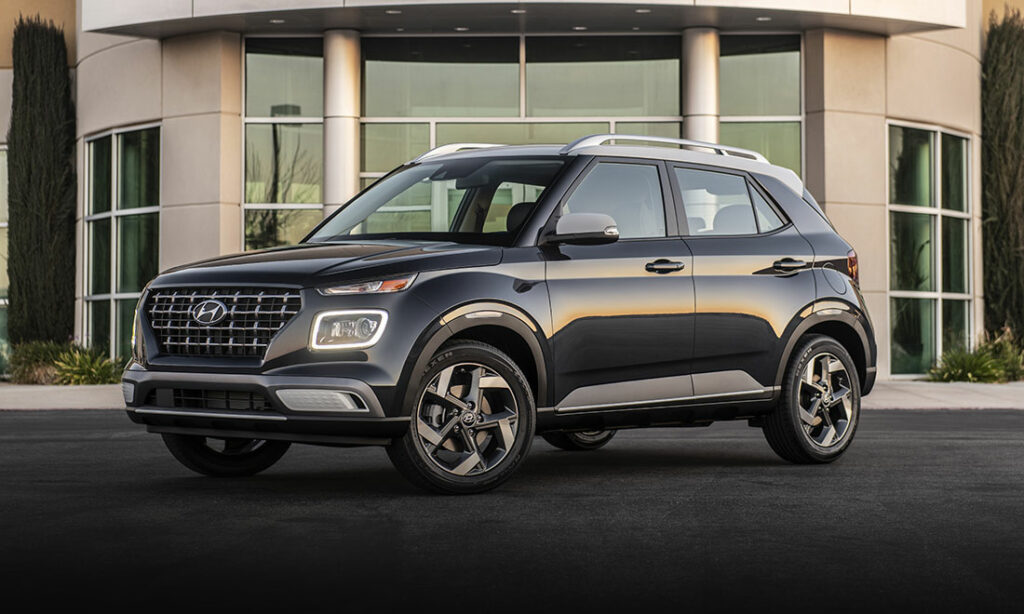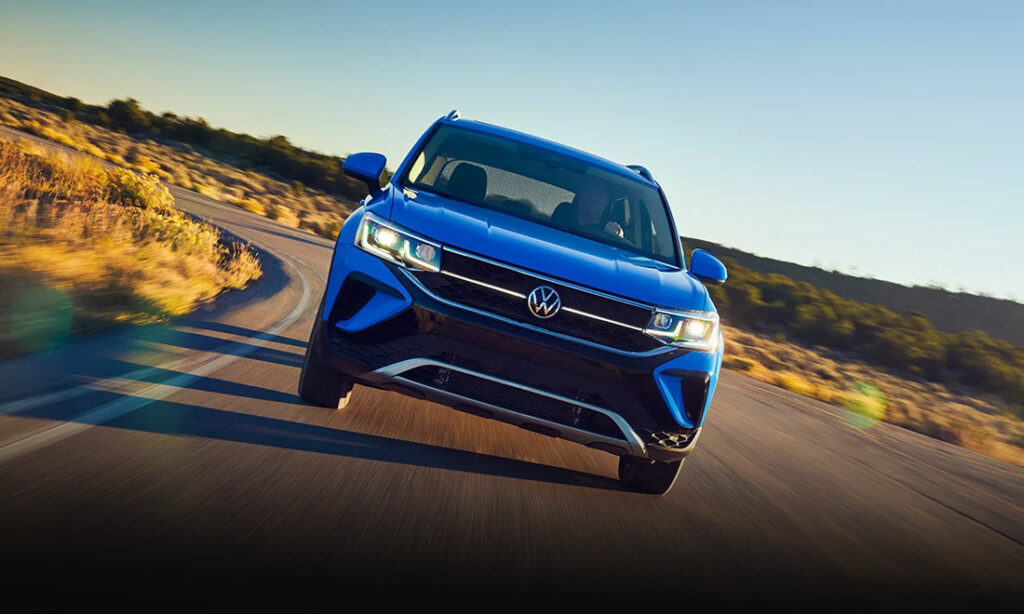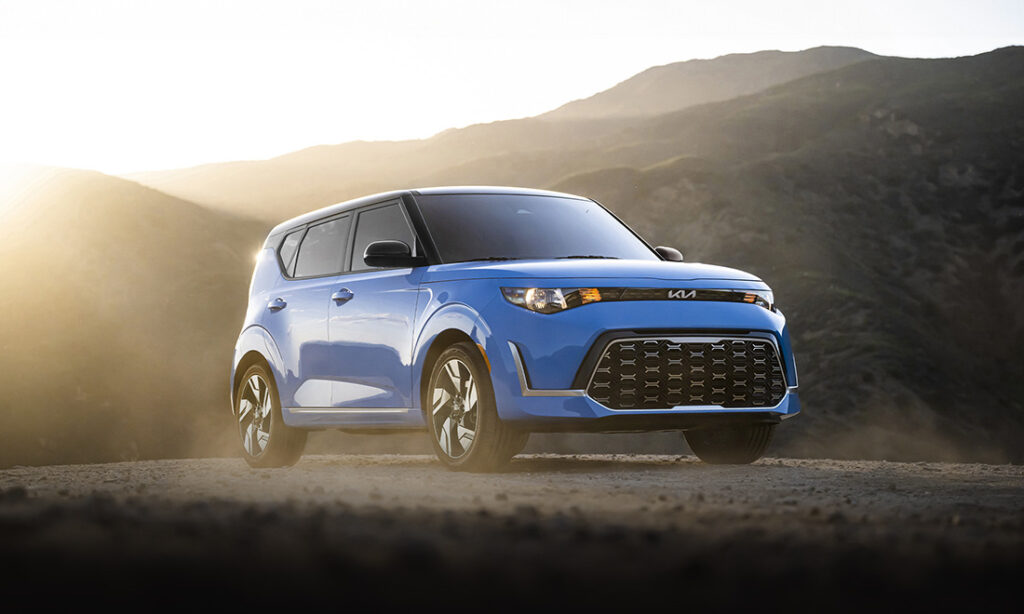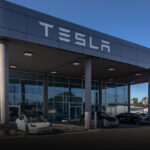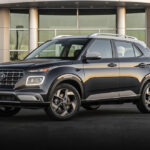Subaru Forester Generations: Through the Years
From the start, the Subaru Forester was built SUV tough, with car handling. Let’s follow the Forester through the years from an idea to an icon.
Looking at Subaru Forester Generations
The Subaru Forester, introduced at the 1995 Tokyo Auto Show, arrived at Subaru dealerships in the United States back in 1997. For five generations, it has delighted owners with its untypical SUV design while still offering all of that SUV space. The original Foresters were based on a car chassis but incorporated the rugged, boxy characteristic that has distinguished it and each of the following generations.
First-Generation Subaru Forester (1998-2002)
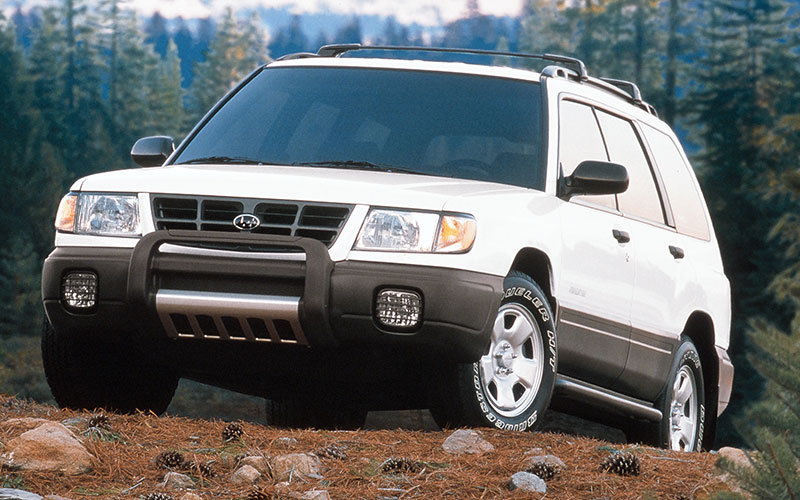
The first-generation Subaru Forester was designed to as a crossover with a sedan’s ease of entry. Sharing its platform with the Impreza, the Forester also shared trim levels as they were Standard, Premium, Sport, Limited, and Touring. From the beginning, the Forester has had a standard all-wheel drive.
- The Forester first appeared at the Tokyo Auto Show in 1995 and entered the US market in 1997 as a 1998 model.
- Being one of the first “crossover” SUVs, it set itself apart with a standard all-wheel drive, a higher seating position, and a taller stance but with the look of a car.
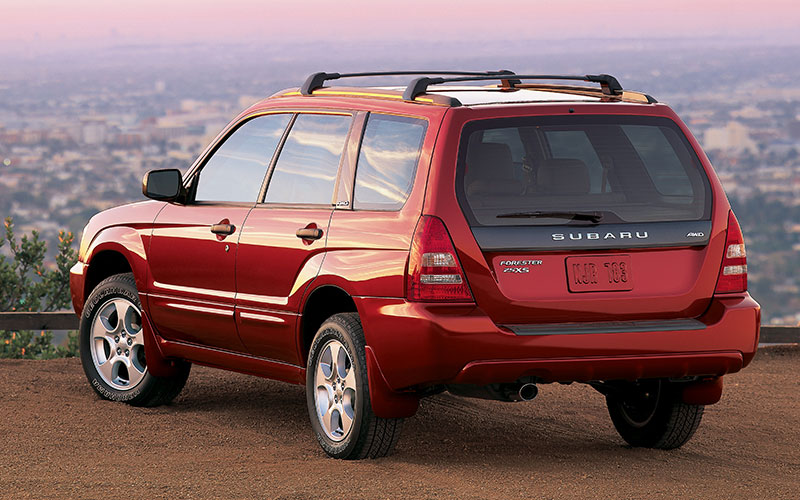
- The Forester’s main competition for this generation was the Toyota RAV4 and Mitsubishi Outlander Sport.
- Although built on the Subaru Impreza platform, the Forester used the Outback’s 2.5-liter DOHC 4-cylinder Boxster engine.
- It had 165 horsepower and 162 lb-ft of torque.
- The 1997 Forester’s car-like low center of gravity met US passenger vehicle safety standards without the “risk of rollover” warning label required on standard SUVs.
- The Forester’s transmission has a multi-plate transfer clutch to split front and rear wheel power demand.
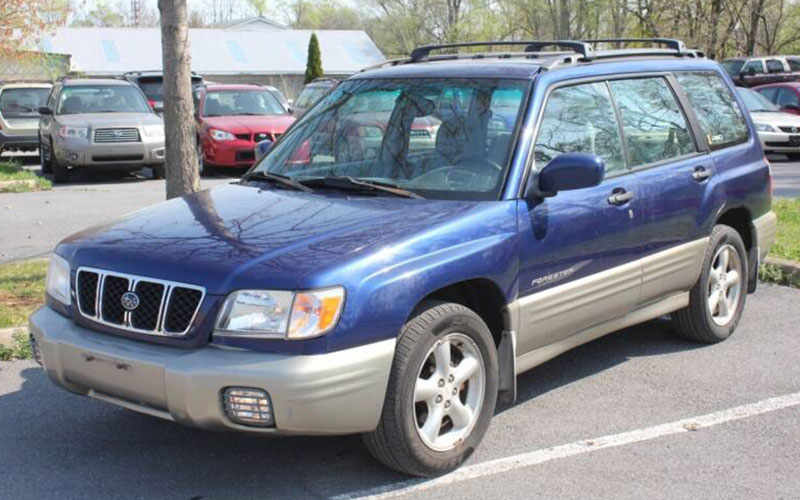
- Automatic transmission Subaru Foresters were set with a 60/40 basic torque split, while Subaru set manual transmission Forester’s basis at 50/50. The computer would change torque based on demand.
- Beginning in 1999, Subaru changed the DOHC 4-cylinder to a Single-Overhead-Cam 2.5-liter 4-cylinder.
- For the 2000 model year, Subaru updated the Forester’s front end, rear, sides, and dashboard.
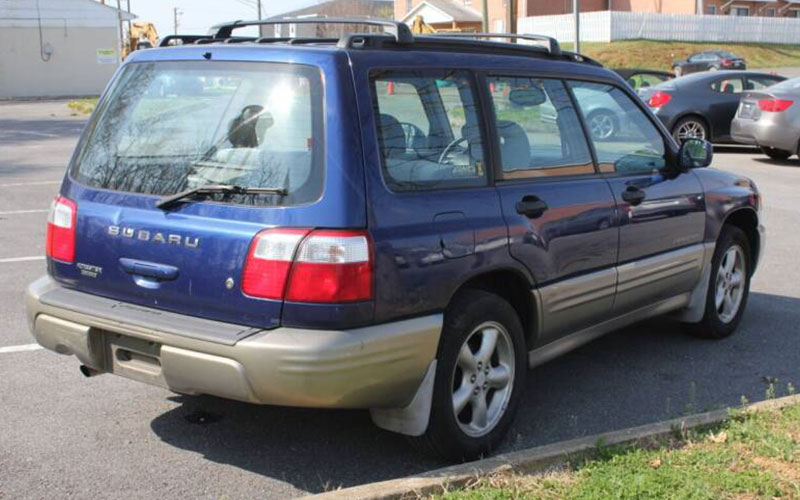
- Subaru also updated the trim selections to a Forester L and top-end Forester S model.
- The base-level L trim was generously equipped with luxury and convenience items like reflector-beam headlights, cruise control, ABS, climate control, a roof rack, and a trailer harness.
- The Subaru Forester S added a viscous-limited-slip differential and larger tires and wheels. Extra’s also included upgraded upholstery, heated front seats, and a keyless entry.
Second-Generation Subaru Forester (2003-2008)
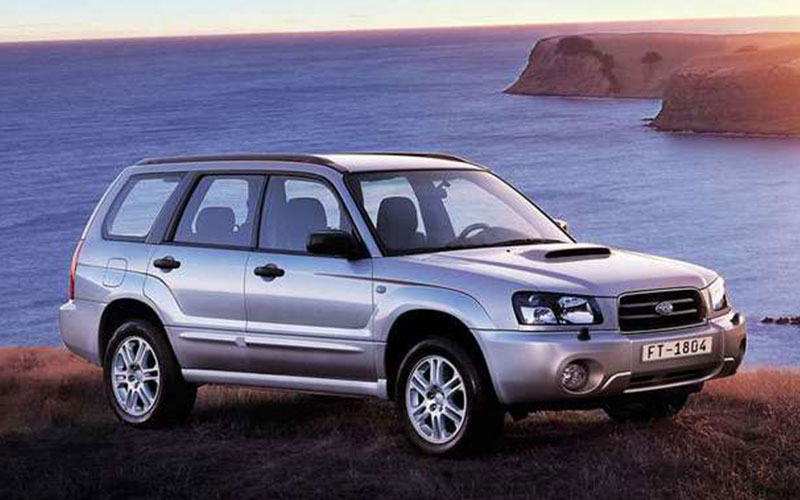
For the second generation, Subaru introduced the new Forester at the 2002 Chicago Auto show. Weight savings, engine power, and handling refinements were the focus of this new generation.
- The second-generation Forester is commonly known as the SG among fans.
- The second-generation Forester received an aluminum hood, hydro-formed sub-frame, and perforated frame rails to help reduce weight.
- Its overall size stayed the same at 175-inches long.
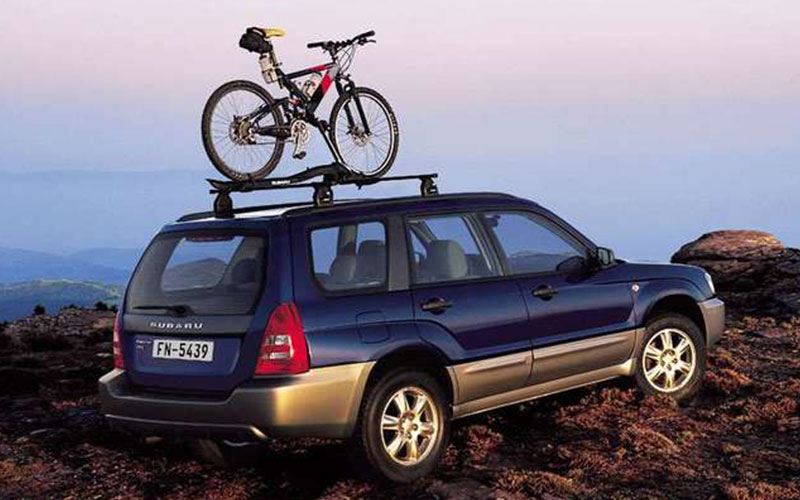
- The 2003 Subaru Forester gained a cargo increase of up to 64 cubic feet.
- In 2004, Subaru launched a new XT trim powered by a turbocharged 2.5-liter engine with 210 horsepower.
- The XT 2.5-liter turbo, in the 2004 model year, had an active valve control system. This Subaru-designed system uses oil pressure to vary valve timing for optimal performance.
- Subaru’s active valve control increased the output of the Foresters base engine to 173 horsepower ad 166 lb-ft of torque.
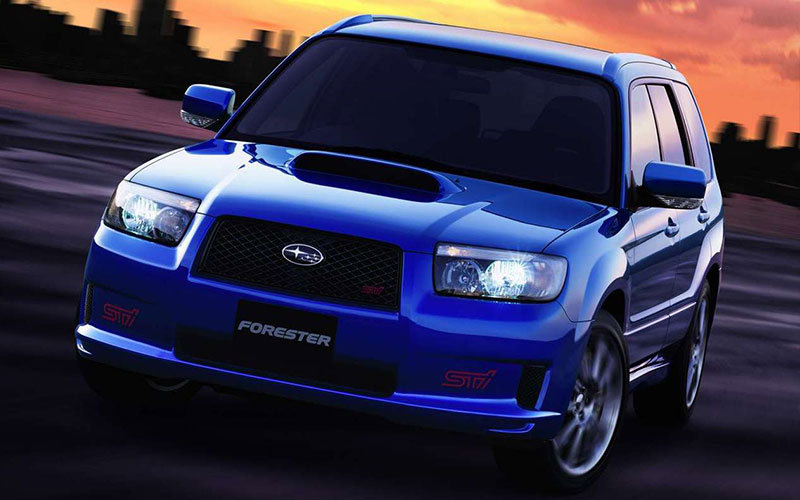
- Subaru added the LL Bean edition Forester with a load-leveling suspension, unique leather seats with Alcantara trim, and a Momo steering wheel in 2004.
- Although the US didn’t get it, Subaru launched the Forester STi in 2004 with exterior add-on’s similar to the WRX STi.
- The JDM Forester STi received the WRX 2.5-liter flat-4 engine, six-speed manual gearbox, larger intercooler, sport exhaust system, and WRX suspension.
- The Subaru Forester STi traveled over 140 mph and would blast to 60 mph in 5.4 seconds.
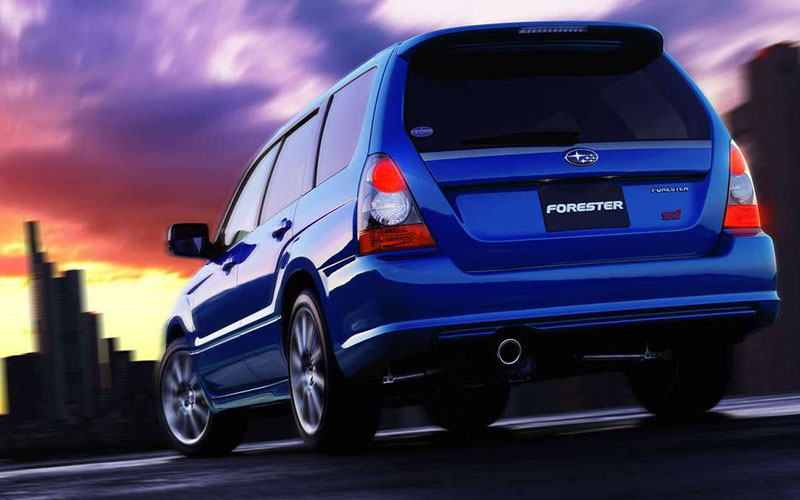
- Due to Subaru’s safety-focused construction, the Subaru Forester received its first 5-star safety rating in 2005.
- The 2006 Subaru Forester received redesigned headlights, a more prominent chrome grille, and updated side moldings. Additionally, body-colored bumpers, handles, and door mirrors were standard.
- In 2006, the XS model was retired.
- For 2007, the Forester received an interior update with bottle holders in the front door panels.
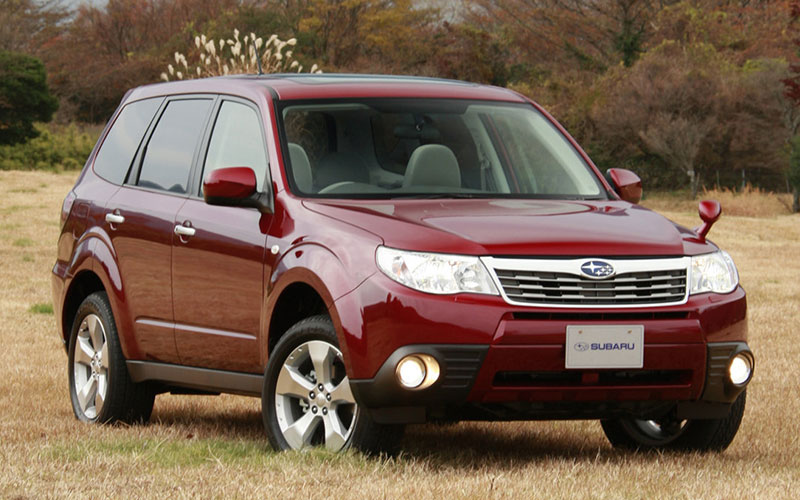
- Subaru added the Sports trim level to the Forester in 2007 with exterior and interior changes.
- In 2008, Subaru’s 2.5-liter turbo’s power increased to 230 horsepower and 235 lb-ft of torque.
- UKi Media & Events’ Automotive Magazines gave the 2.5-liter engine the 2.0 – 2.5-liter International Engine of the Year award.
- All of the second-generation 2.5-liter engines used a rubber timing belt. Changing this belt every 100,000 miles was a vitally important maintenance task.
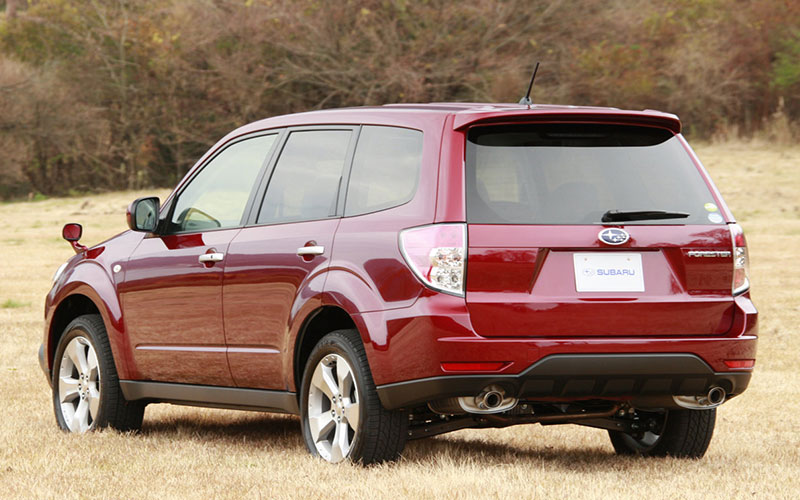
- Common complaints surfaced about the VDC (Vehicle Dynamic Control) automatic transmission, long-term seat comfort, rear-seat legroom, and poor-quality stereos.
- The Forester gained a reputation as a safe and well-built crossover that was capable of light off-road adventure.
- Crossover SUVs were becoming more and more popular, but this generation of Subaru Forester was less of a crossover and more of a station wagon.
- Subaru replaced the Forester with a larger and taller third-generation SH model in 2009 to align with market trends.
Third Generation Subaru Forester (2009-2013)
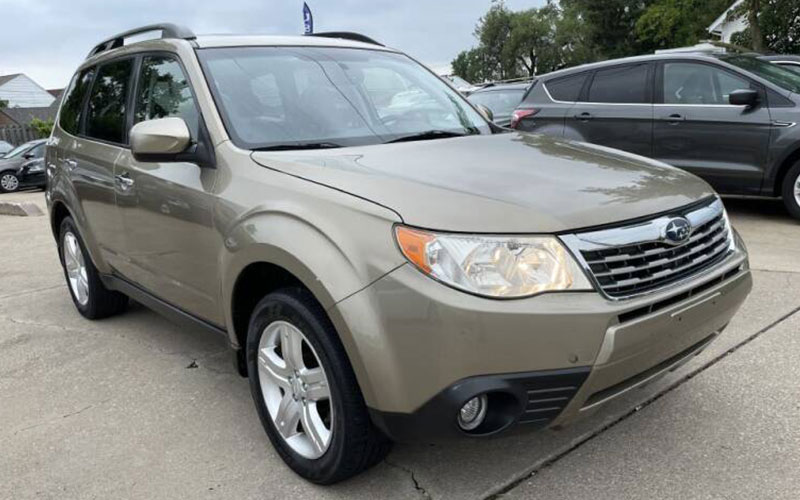
Subaru’s third-generation Forester moved away from its station wagon shape into more of a crossover SUV format. The 2009 Subaru Forester launched at the 2009 North American Auto Show. Styled by Subaru’s Chief Designer Mamoru Ishii, the Foresters wheelbase increased 3.5 inches, grew longer, wider, and higher. Its larger size and the sloping roofline put it solidly into the crossover segment.
- The “SH” Forester grew larger and taller to become a crossover officially.
- The new Forester received a newly designed double-wishbone suspension for improved ride and handling with its redesigned body.
- The third-generation Subaru Forester increased ground clearance to 8.7 inches.
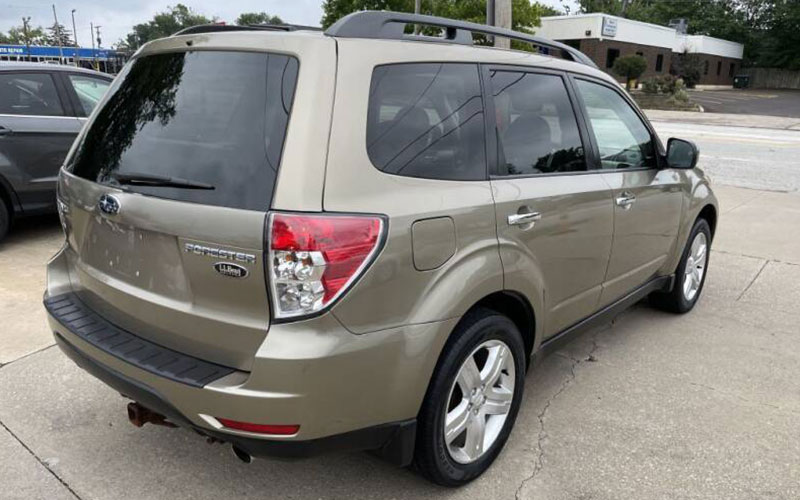
- The third-generation Subaru Forester increased ground clearance to 8.7 inches.
- Subaru updated the Forester’s four-speed transmission to include a Sportshift mode.
- Subaru added six airbags, panic braking assist, stability control, and other safety assists to the Forester.
- The 2009 Subaru Forester’s interior was updated with a touchscreen infotainment system, navigation, and a premium six-speaker surround sound audio option.
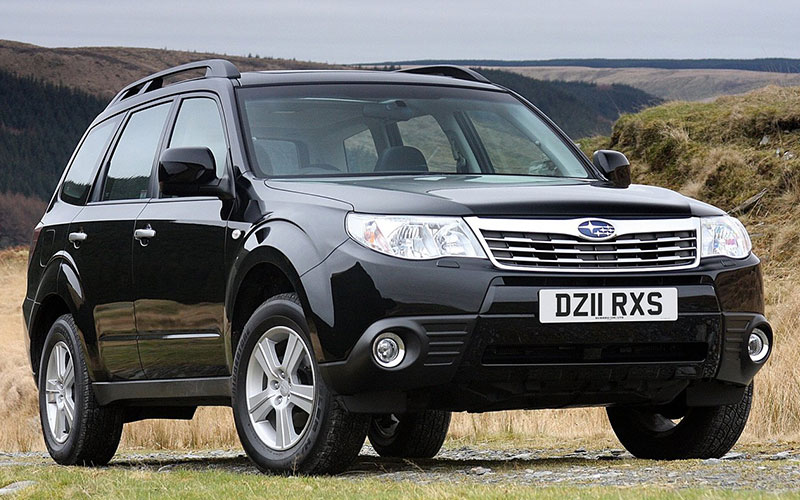
- Additionally, Subaru included steering wheel audio controls for the first time.
- Subaru updated the model trims to 2.5X, 2.5X Premium, and 2.5X Limited. The Subaru Forester also added a turbocharged 2.5XT and 2.5XT Limited.
- The Subaru XT models had a more prominent and functional hood scoop to push air through the larger turbo intercooler.
- For 2009, consumers could choose between a five-speed manual and a four-speed automatic Subaru transmission.
- 2009 was the last year that Subaru offered an LL Bean edition Forester.
- In 2009, the Subaru Forester received a coveted PZEV emissions designation for the 2.5X model.
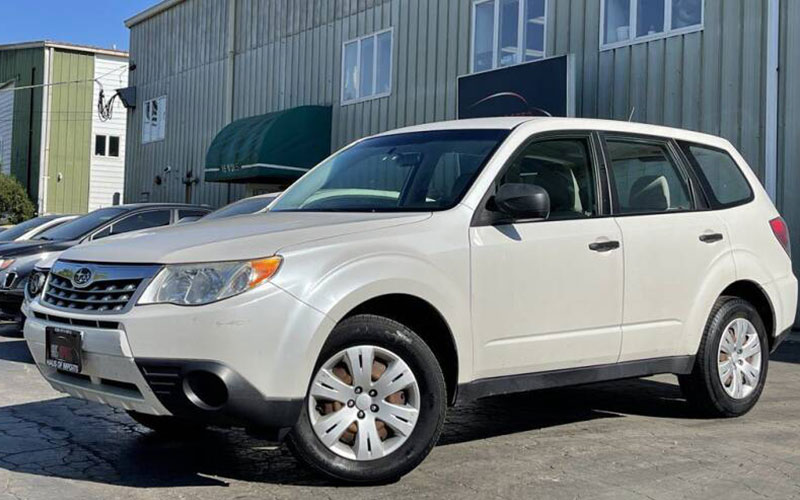
- Subaru gave all models VDC. Vehicle Dynamic Control was first seen in SG XT Sport models and is a safety system that monitors wheel speed, steering wheel position, yaw rate, and lateral acceleration.
- 2011 Subaru Foresters received a rear backup camera and Tom-Tom navigation. Touring trims picked up HID headlights.
- In 2013, Subaru added USB inputs and Bluetooth audio as standard features.
- The third-generation Subaru Forester received high owner satisfaction except for its shallow passenger seat’s lack of height adjustment.
Fourth Generation Subaru Forester (2014-2018)
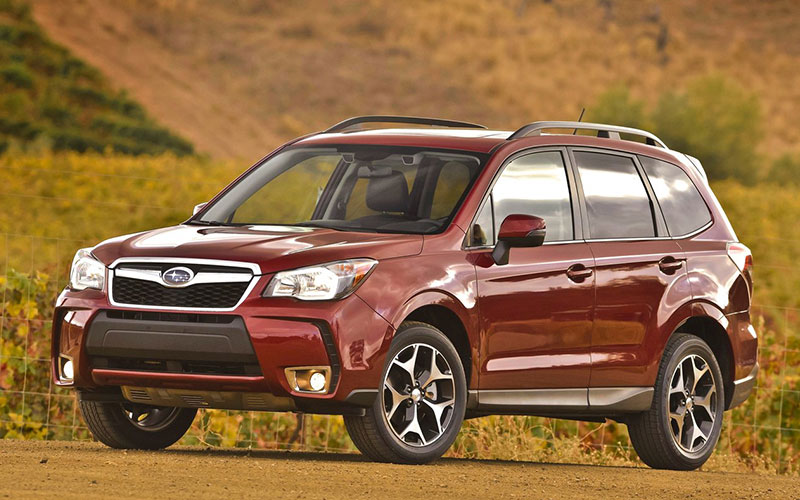
The fourth-generation Subaru Forester, introduced at the 2013 New York International Auto Show, was completely redesigned. Its maximum cargo area increased to 74.7 cubic feet and interior passenger space allowed for increased legroom and improved seating. The interior also received improved ergonomics with an updated dashboard that included more prominent infotainment and climate controls.
- The Subaru Forester’s interior volume increased with rear seat room at 41.7 inches and rear cargo volume up to 74.7 cubic feet.
- Interior comfort improved in the fourth-generation Forester with more space and increased front and rear passenger seat height.
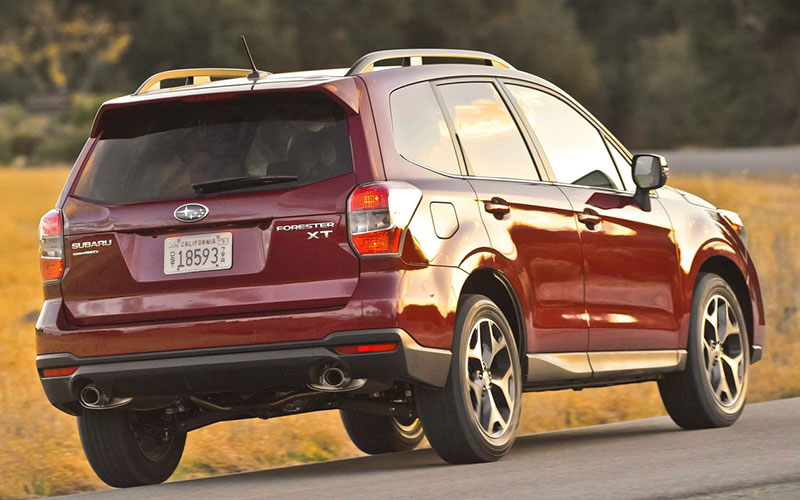
- Interiors also offered a push-button start and a new Harman Kardon audio upgrade.
- The Forester received a CVT transmission for the first time, which decreased the Subaru’s towing capacity by 1,500 lbs. The benefit of the CVT is increased miles per gallon.
- A manual transmission was still available. Subaru upgraded the 2014 Forester transmission to a six-speed replacing the previous generation five-speed.
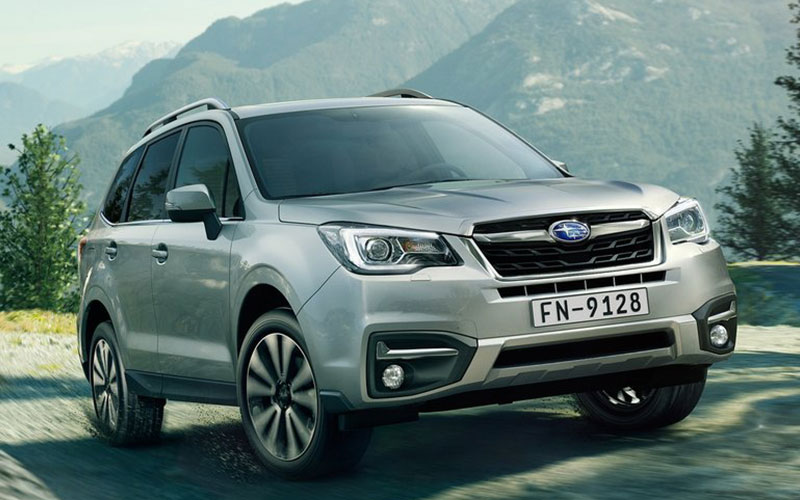
- The Forester XT models received a high-torque CVT to handle the extra demands of turbocharged engines. The turbo models also received paddle shifters.
- Higher-end Subaru Forester models received “X-Mode” AWD, giving better car control over slippery and uneven roads.
- Even with the extra power, fuel economy was increased to an EPA-rated 32 mpg.
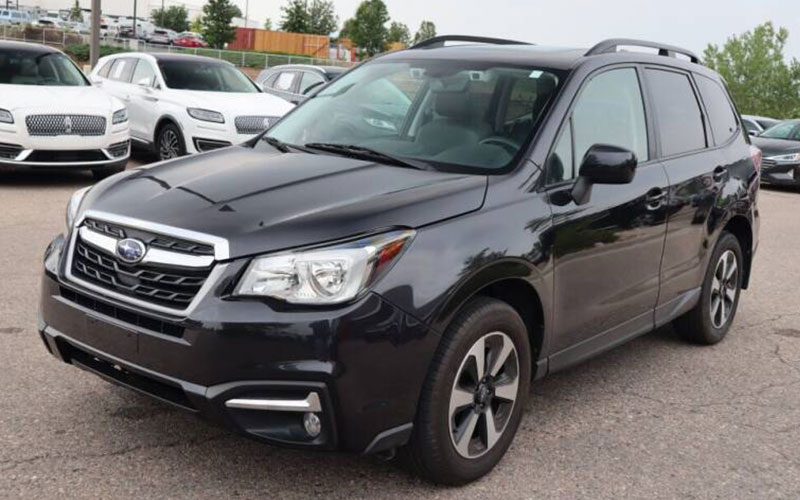
- The fourth-generation Subaru Forester received a revised sport suspension with 18-inch wheels and chassis stiffening to better the XT models’ handling.
- Subaru introduced its Eyesight driver assist technology with its stereoscopic CCD cameras. Eyesight provided pre-collision braking, throttle management, adaptive cruise, and lane departure warnings.
- US model fourth-generation Subaru Foresters had issues with excess oil consumption. Subaru provided an extended eight-year warranty on the engine and an engine rebuild.
Fifth Generation Subaru Forester (2018 – Present)
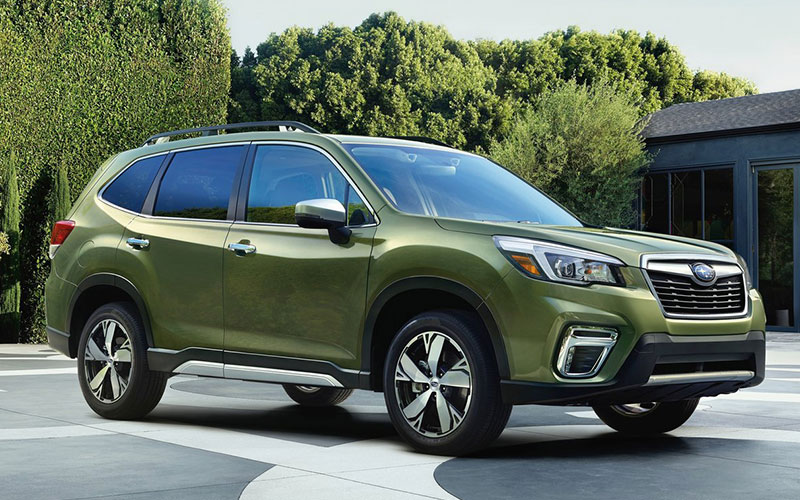
Subaru introduced the fifth-generation 2019 Forester at the New York International Auto Show in March 2018. Even though fitted with Subaru’s branded Symmetrical All-Wheel Drive, the new design and features moved the Forester towards refinement of comfort and quality of material fit and finish to compete against the competition.
- Subaru updated the fifth-generation Forester with Subaru’s Global Platform. This increased interior space, comfort, and handling
- Subaru’s LED Steering Responsive Headlights and High Beam Assist are now standard on all trim levels.
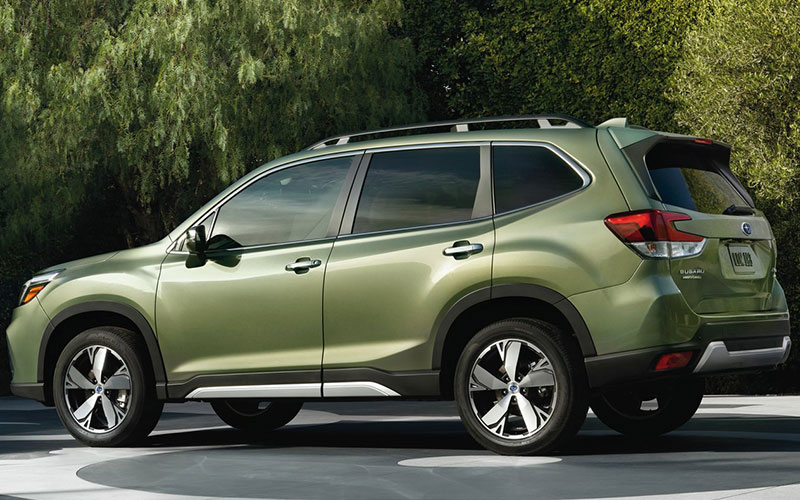
- All Forester trims now come standard with Subaru’s EyeSight Driver Assist Technology.
- One of three symmetrical all-wheel-drive versions is available on every fifth-generation Subaru Forester.
- For the first time, all Forester models receive one engine. Subaru’s direct injection, non-turbo 2.5-liter boxer four-cylinder produced 182 horsepower and 176 lb-ft of torque.
- The only available transmission is a Lineatronic CVT.
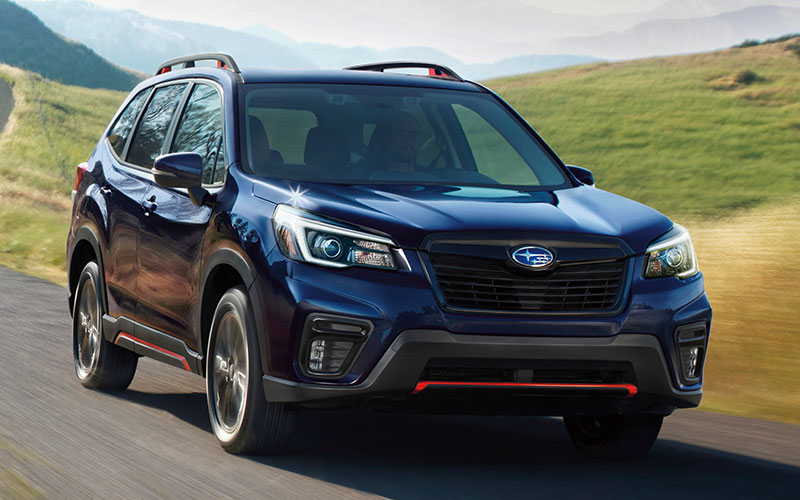
- Depending on trim level, different Variable Torque Distribution is available. All trims provide at least 60/40 distribution.
- Subaru introduces two X-Mode versions. Single X-Mode and Dual Function X-Mode.
- Single X-Mode controls wheelspin, incorporates Hill Descent Control, and optimizes engine output and transmission ratios.
- Dual Function X-Mode on Sport, Limited and Touring models add user-selectable settings such as Snow/Dirt and Deep Snow/Mud modes.
- The Touring and Limited trim have an 8-inch infotainment system with a touchscreen and voice control.
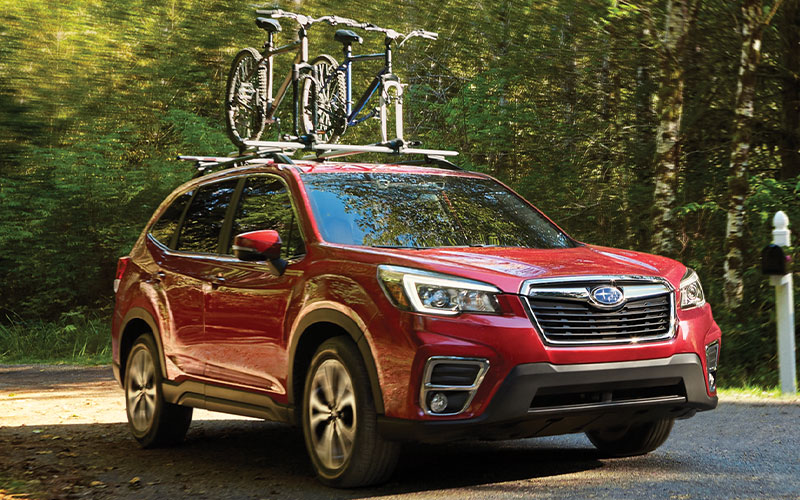
- Every Subaru Forester above the base trim received a panoramic moonroof above the front and rear seats.
- In 2019, Subaru introduced an e-Boxer hybrid powertrain for the European-market Forester. The e-Boxer combines an electric motor into a CVT boost power and fuel economy.
- Subaru says there isn’t an e-Boxer in the US because we don’t need one. The 2021 internal combustion engine Subaru Forester is the second best-selling model in its lineup.
- Subaru plans to have a hybrid, plug-in hybrid, and electric Forester models by 2030.


